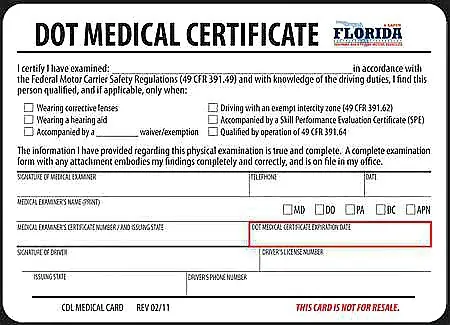Starting a career as a professional truck driver in Wisconsin begins with understanding the essential Wisconsin CDL requirements and preparation steps. Navigating the complex process of obtaining a Commercial Driver’s License demands careful planning, from medical certifications to documentation and training. Whether you are a career-changer or a recent graduate, this comprehensive guide will walk you through everything you need to know to successfully prepare for your Wisconsin CDL and hit the road to a promising trucking career.
Now let’s dive in to see what you need to prepare today!
What are the Wisconsin CDL requirements?
To be qualified for the Commercial Driver’s License (CDL) in Wisconsin, you must meet several requirements such as age standard, state identity/residency, completing the Entry-Level Driver’s License, and passing the CDL Knowledge and Skills test.
All of these requirements are to ensure that you are comprehensively suitable for the commercial driving career. Now let’s discover the details!

Age requirements
Like other states in the US, you must be at least 18 years old to drive within the Wisconsin state and at least 21 years old to drive outside of it, or to operate vehicles carrying hazardous materials.
Age standards are made not only to ensure your physical readiness but also your legal responsibility for your actions relating to your driving career.
Proof of residency/identity
Individuals applying for a CDL must demonstrate their legal status in specific situations, such as obtaining a license for the first time, renewing it, transferring from another state, and so on. Acceptable documents for this purpose include:
- A valid US passport or passport card.
- A US birth certificate issued by a state or local government (Note: Puerto Rican birth certificates dated before July 1, 2010, are not accepted per Puerto Rico’s legal updates).
- A consular report of birth abroad.
- A valid permanent resident card (Form I-551), including older versions issued between 1977 and 1989.
- A US Certificate of Naturalization (Form N-550).
- A Certificate of US Citizenship (Form N-560).
- An unexpired foreign passport with an active US visa and Form I-94 documenting the latest entry into the US (Electronic I-94s can be printed if a paper version was not issued).
- An unexpired Employment Authorization Document (EAD), subject to successful verification through DHS’s Systematic Alien Verification for Entitlements (SAVE) program for REAL ID compliance.
Medical certification
In Wisconsin, you are also required to present your Medical Examiner’s Certificate (MEC) to show that you are physically qualified for commercial driving work. To receive MEC, you need to take the DOT physical which is provided by many medical centers.
However, it is crucial to note that your MEC is only marked as qualified if you take it from a certified medical center which is recognized by the Federal Motor Carrier Safety Administration (FMCSA).
There are some qualifications relating to MEC that you need to meet such as vision, hearing or blood pressure standards. Below is the details:
Vision
Vision standards are as below:
- Visual Acuity: Must have 20/40 vision in each eye, either with or without glasses.
- Binocular Vision: Must achieve at least 20/40 vision in both eyes together, whether wearing glasses or not.
- Field of vision: must have at least 70 degrees of horizontal vision in each eye.
- Color Recognition: must be able to identify the colors of traffic signals (red, green, and amber).
Hearing
Applicants must be able to detect a forced whispered voice from at least five feet away in their ear, with or without a hearing aid. If tested with an audiometric device, the applicant should not have a hearing loss of more than 40 dB in the better ear at 500 Hz, 100 Hz, and 2000 Hz.
Blood pressure
The applicant’s blood pressure is evaluated as part of the Department of Transportation (DOT) physical. The blood pressure limits are as follows:
- Normal: below 140/90 mmHg, with certification for up to two years.
- Stage 1 Hypertension: Between 140/90 mmHg and 159/99 mmHg, with certification for one year.
- Stage 2 Hypertension: Between 160/100 mmHg and 179/109 mmHg, with a temporary three-month certification for lifestyle changes or medication adjustments.
- Stage 3 Hypertension: 180/110 mmHg or higher, considered severe hypertension. Applicants must lower their blood pressure to below 140/90 mmHg before receiving certification.
Entry-Level Driver Training
As of 2022, the Federal Motor Carrier Safety Administration (FMCSA) mandates that certain Commercial Driver’s License (CDL) applicants complete Entry-Level Driver Training (ELDT) before obtaining their CDL. This requirement applies if the applicant is:
- Applying for a class A or class B CDL for the first time.
- Upgrading from a class B to a class A CDL.
- Seeking their first School bus (S), Passenger (P), or Hazardous Materials (H) endorsement.
The ELDT includes both theoretical instruction and practical training to ensure drivers meet essential safety and operational standards. Importantly, the training must be provided by a registered training provider listed in the FMCSA’s Training Provider Registry.
CDL Knowledge and Skills test
To obtain a CDL, you also need to pass two mandatory tests which are the CDL Knowledge and Skills test. These two tests are designed to assess not only your theoretical understanding of driving commercial vehicles but also their practical skills in vehicle operation.
Knowledge test
The first step to getting a CDL is passing the Knowledge test, which is required to obtain a Commercial Learner’s Permit (CLP). This test covers various topics related to vehicle operation and driving safety. It includes:
- General Knowledge test: Comprising 50 multiple-choice questions, with a passing score requiring at least 40 correct answers.
- Air Brakes test (if applicable): For those operating vehicles with air brake systems, this test consists of 25 questions, where 20 correct answers are needed to pass.
- Combination vehicle test (if applicable): If the vehicle is a combination type, this test requires answering 16 out of 20 questions correctly.
In addition, you also have to take other endorsements if your vehicle is a school bus or it transports hazardous materials, or other specialized purposes.
Once the Knowledge test is passed, the applicant will receive a CLP, allowing them to proceed to the next step: the CDL Skills test.
Take the Wisconsin CDL practice test today!
Skills test
The Knowledge test alone is not enough to obtain a CDL. Applicants must also demonstrate their practical skills in the Skills test. This test includes:
- Pre-trip inspection: The driver must inspect the vehicle to ensure it is safe to operate.
- Basic Vehicle Control: Applicants must demonstrate control over the vehicle in a controlled environment.
- On-road Driving: This portion evaluates the applicant’s ability to safely operate the vehicle in real-world driving conditions
Upon successful completion of the CDL Skills test, applicants will be awarded the Wisconsin CDL, marking the beginning of their professional driving career.
FAQs
1. When is a CDL license in Wisconsin required?
A CDL is required in Wisconsin for operating vehicles weighing 26,001 pounds or more, transporting hazardous materials, or carrying 16 or more passengers, including the driver.
2. What is the weight limit for a CDL in Wisconsin?
A CDL is required for operating vehicles with a Gross Vehicle Weight Rating (GVWR) of 26,001 pounds or more. This includes vehicles designed to transport 16 or more passengers (including the driver) or vehicles used to transport hazardous materials, regardless of weight.
Final thoughts
Understanding Wisconsin CDL requirements is necessary if you want to prepare for it in the most comprehensive way. In short, to be qualified for the CDL in Wisconsin, you must meet age standards, provide proof of residency/identity/ medical certificate, complete the Entry-level Driver Training, and pass the CDL Knowledge and Skills test. All done? Now you can get your official CDL and ace your commercial driving career!



